Rina Patwardhan, Pune
Here is why and how Rina tai started garden
Rina has done BSc. and MSc. in Horticulture and PHD in Special genetics and plant breeding. Wow!! Amazing, isn’t it? Asking Rina why she created garden is pointless; she had to 😊.
Originally from Assam, Rina is settled in Pune now. Back in Assam, she had a nice garden at her parent’s place, which was admired by all. She has wide experience in field work, teaching.
Spend some time with her, and you realise what an encyclopedia Rina is. Intelligent, knowledgeable, humble, always eager to provide inputs, generous when comes to sharing her knowledge and experience and always, always there to help. This perfectly describes Rina.
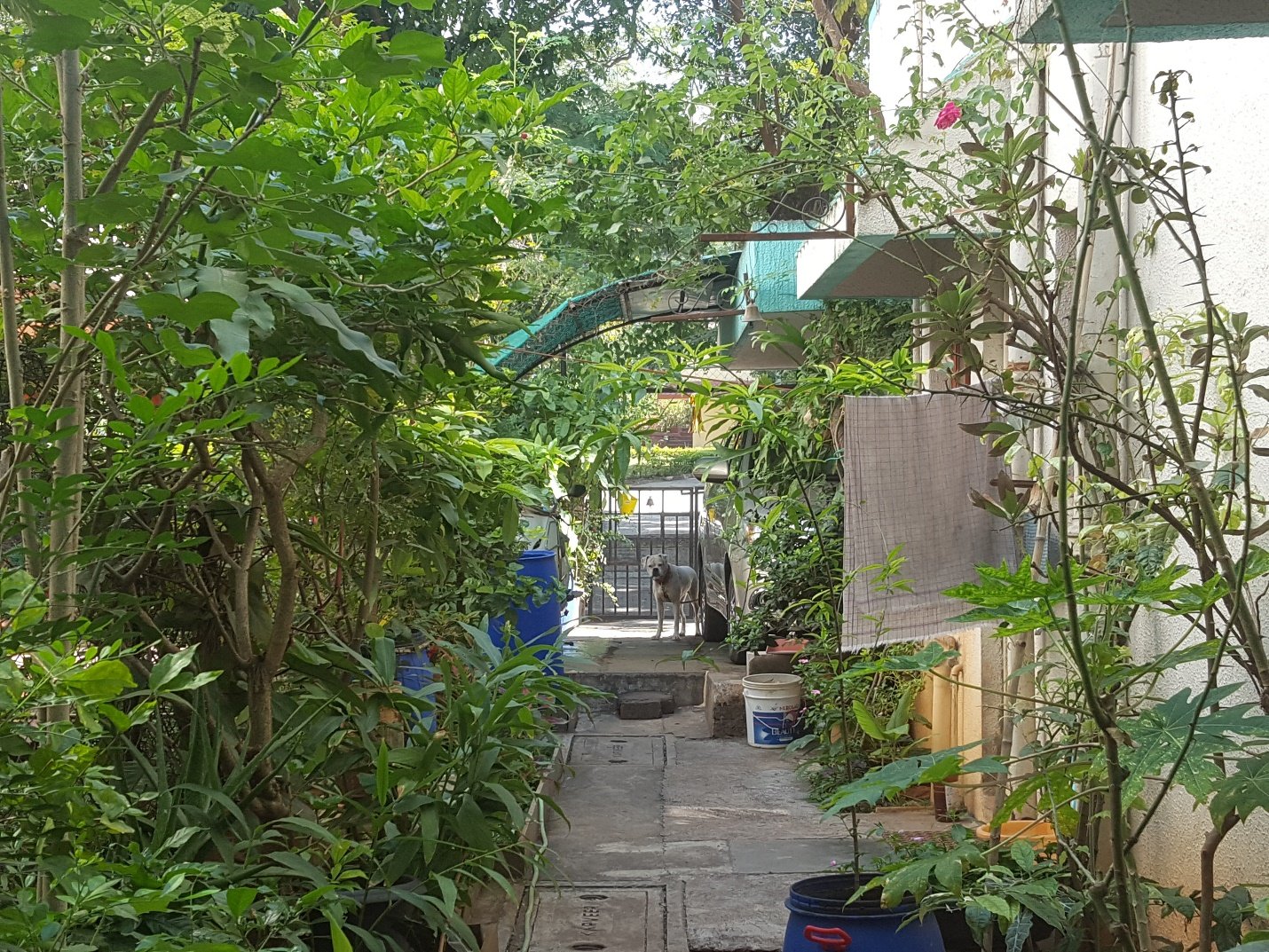
At Brown Leaf, we suggest 3-fold strategy for managing dry leaves. It is Mulch – Compost – Donate. Rina practices all 3. She does mulch in her garden, composts leaves form her own garden and, in her society, and donates the surplus leaves from society.
We soon will have a dedicated blog covering society-level composting practiced by Rina.
Rina has garden as well as terrace garden.
Waterproofing
She carried out waterproofing on terrace before she started terrace gardening. She took care that no chemicals are used in waterproofing process though.

Planning
Like any other project, deciding objective is necessary for terrace garden. Here we do not have acres and acres of land at disposal. Hence to get maximum out of a few hundred sq. feet, we need to decide exactly what we wish to cultivate.
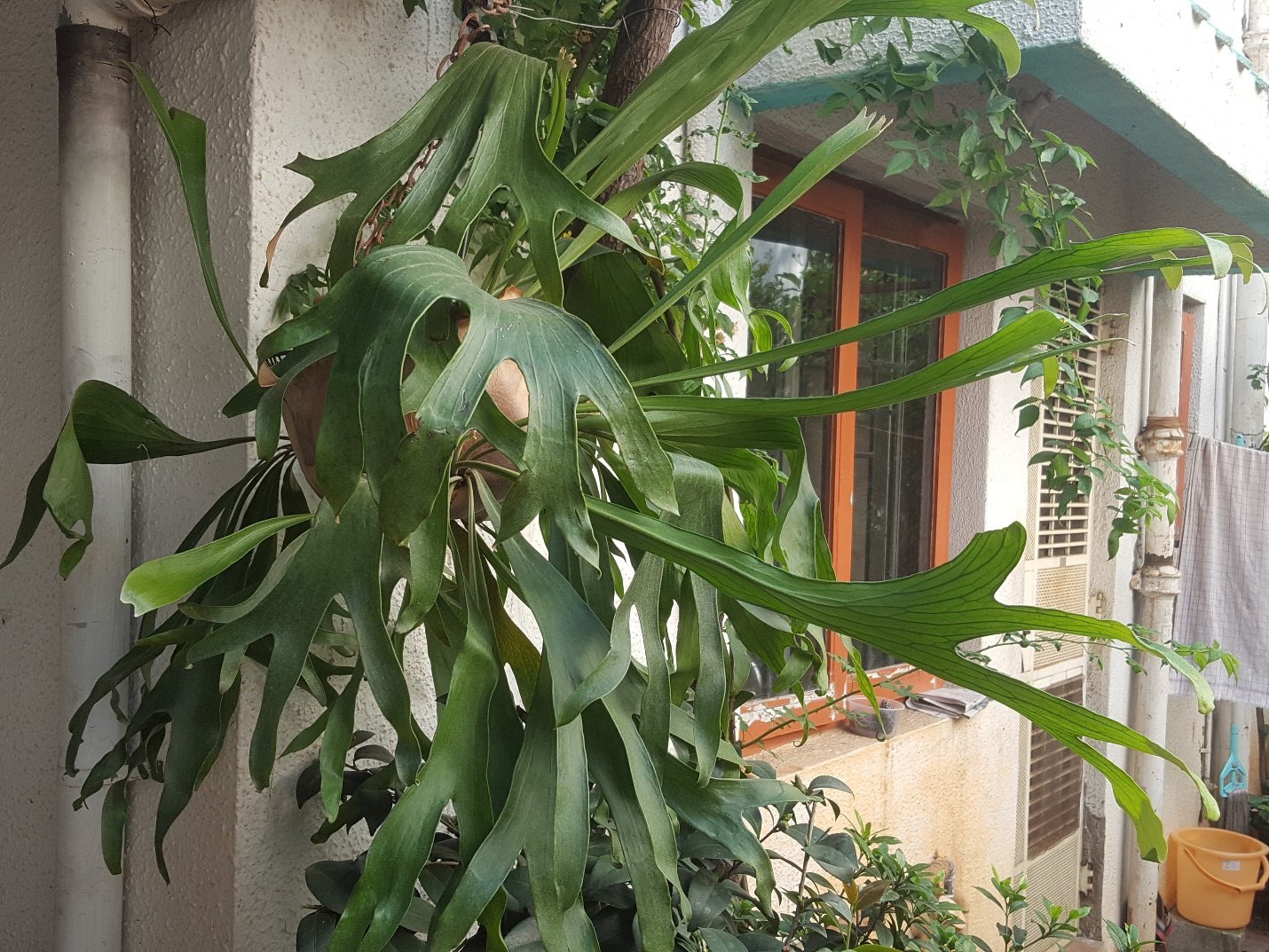
Rina wanted her family to have chemical-free vegetables and fruits. Her garden strikes golden balance between utility and aesthetics. Vegetables, fruits and beautiful flowers adorn her garden.

Preparation
Soil is formed with erosion of rocks. Many minerals from the parent material are present in the soil. When we create soil-less gardens, do we miss out on these minerals? Answer is yes. Challenge is that we do not know exactly what we might be missing and what we are depriving the plant of.
Adding egg shells to plant beds or containers provides calcium much needed for plant growth, suggests Rina. Dry them in the sun, crush them and add them to the plant-bed or container. Rina’s experience is that egg shells also control snails and millipedes.
In case of some vegetables, lack of certain minerals can impact their growth. Adding Boron to cauliflower container helps increase its curt.
Humani or white grubs is the common challenge for any gardener. White grubs if picked out of plant bed and left in the sun, immediately die. Rina suggests adding these dead white grubs to the soil. They when decompose, add calcium, which helps plants.
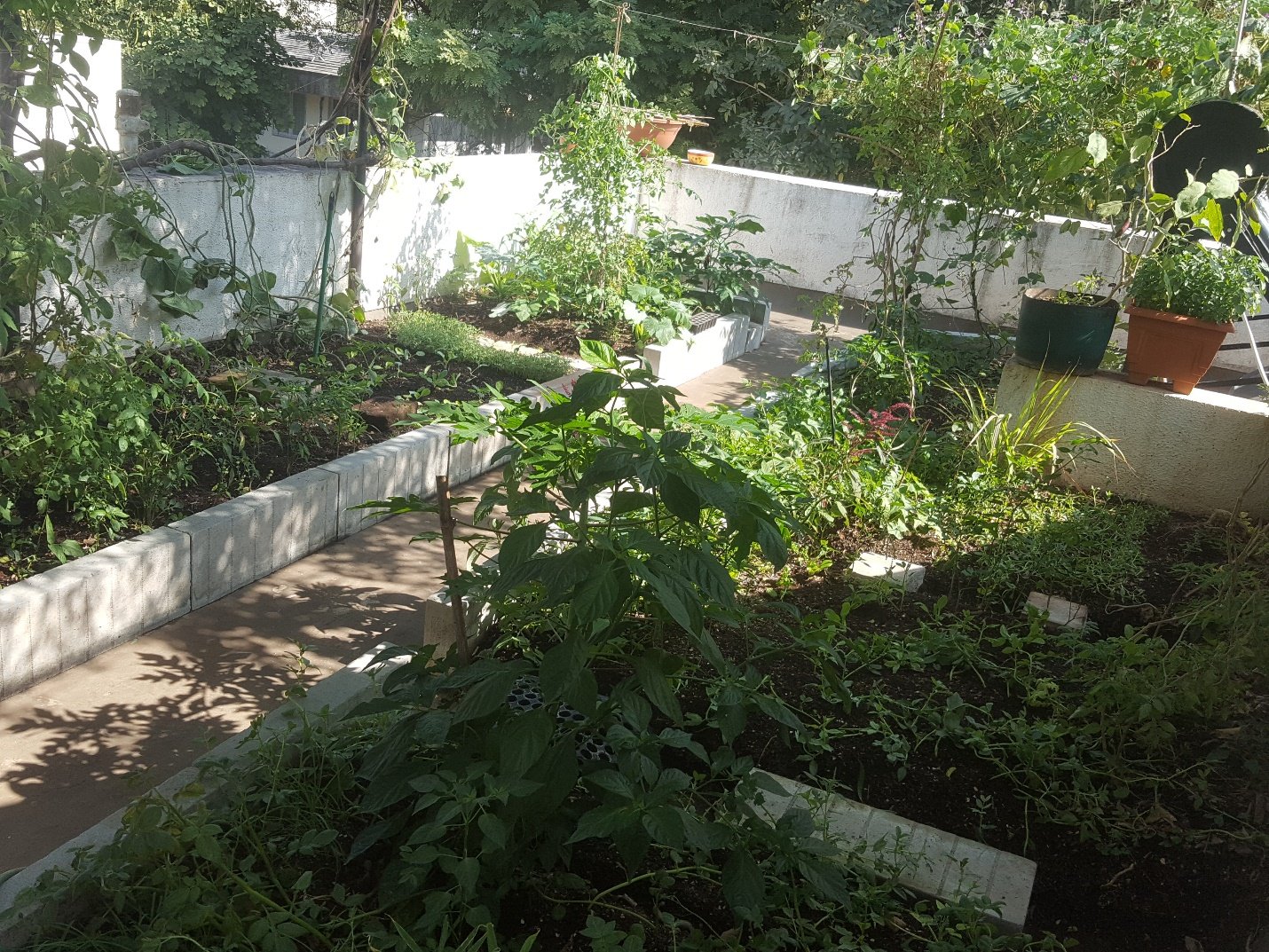
Dry leaf compost certainly has one major advantage over soil, when it comes to nematodes, observes Rina. They are a major challenge for soil. But they somehow do not grow in dry leaf compost.
Rina suggests adding soil to the pot to provide stability to roots, though not required for plant beds.
Her garden is 90% of dry leaves and rest is kitchen waste plus some soil.
How does she prepare compost?
Rina has converted an old bath tub into composter. She suggests making alternate layers of dry leaves and kitchen waste.
Rina also practices in-situ composting on the terrace. In-situ composting means instead of creating compost somewhere else and then adding it to the plant container, compost is crated right where plants are.
Aeration, Temperature and Moisture (ATM) are vital for composting. As far as Pune is concerned, we don’t need to worry about temperature. It is ideal for microbial growth in the compost. Moisture, she feels is a tricky factor. Too much and too little, both are bad.
For more about composting, do download the guide here, https://brownleaf.org/wp-content/uploads/2018/10/How-to-manage-dry-leaves.pdf
Where to get dry leaves?
In Rina’s case, her society has around 280 trees. So dry leaves are always available. In fact, quantity is such, that even after composting at society-level, a large chunk of leaves remain, which she donates to people who want dry leaves for mulching and composting.
In tropical regions, deciduous trees shed leaves in winter. Leaf fall starts around November and continues till June. Dry leaves is challenge for people. Often dry leaves are burnt since that seems a convenient option. At the same time, there are gardeners, who need dry leaves for compost.
Why not bring “availability” and “requirement” together? (For details about this initiative, www.brownleaf.org)
Using dry leaves from your own garden and from surrounding areas will prove to be a win-win situation.
Regular Care
Rina, somehow has never used jeevamrut sprays. Regular watering, compost made from dry leaves and kitchen waste and keen observation that helps her spot problems early, defines Rina’s successful harvest.
Rina has beautiful Ash gourd creeper loaded with fruits. Each ash gourd is so huge. I wondered how the creeper can bear the weight of such a large fruit. Rina ties old dupatta/ a mesh, along the growing ash gourd and the support on which creeper grows. This helps the creeper bearing weight of the fruit.
Rina’s observation is very interesting. If a support is not provided, the fruits do not grow so huge. Fruit grows only up to the point where creeper can bear its weight. Wow!! That is one intelligent creature.
Rina adds, plants have numerous mechanisms to protect themselves. Like a brinjal plant produces certain chemicals to fight off the pest like fruit boarers.
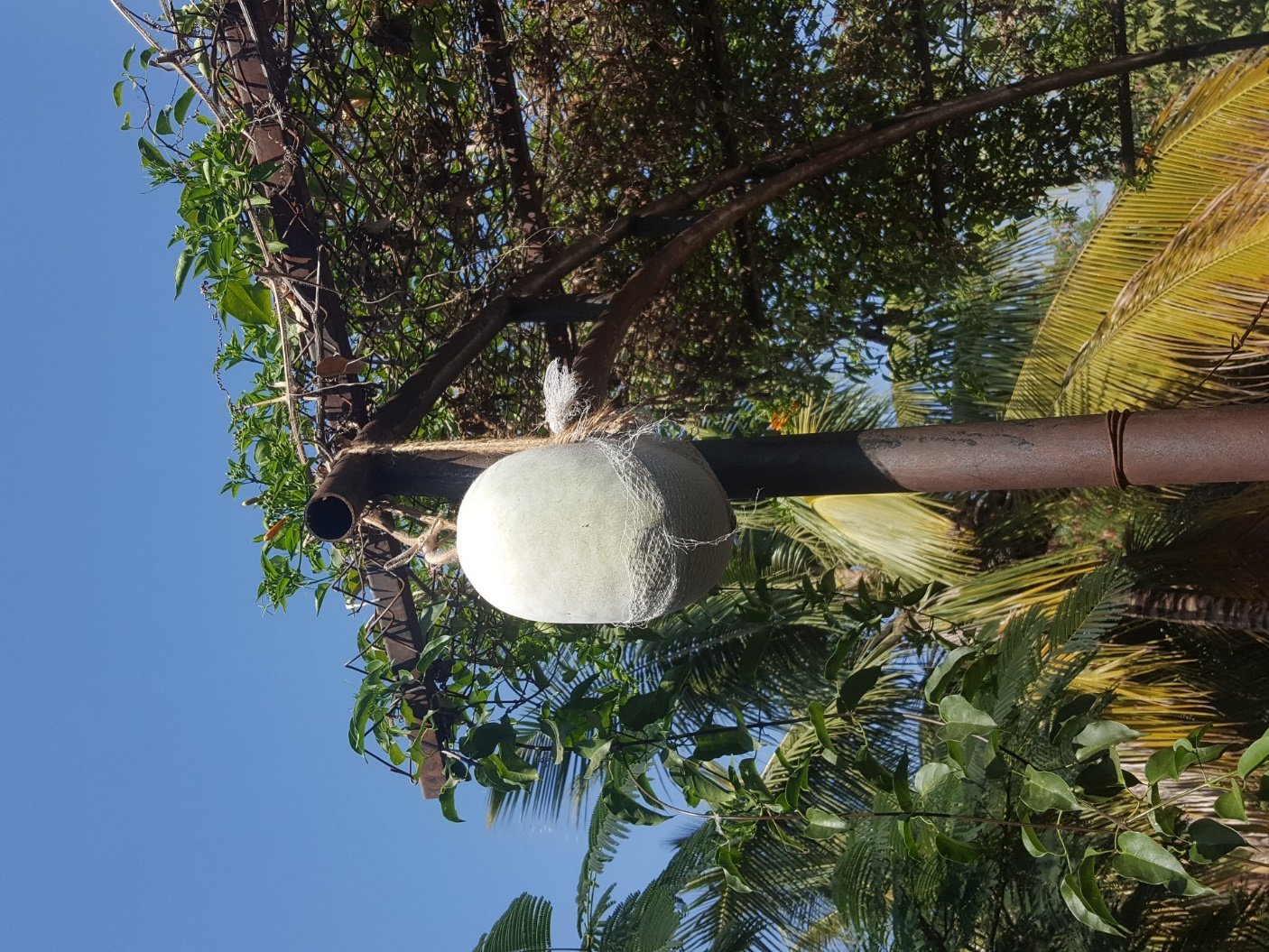

Ash gourds. Look at the size!!
Watering
Mulching helps soil retain moisture and thus water is conserved. It also reduces speed of water. Water percolates gradually in the container, thus preventing leaching of nutrients.
Let leaves that fall in the plant bed be. Don’t sweep them off. To read more about mulching, do read our blog, https://brownleaf.org/mulch/

Produce from terrace garden
Vegetables
Various variety of Brinjal, Tomato, Chilly, Squash, Ash gourd, White gourd, Bitter Gourd, Taro, Cabbage, Cauliflower, Spinach, Fenugreek, Coriander, Lemons, Beans, Ginger, Potato




Squash

Fruits
Strawberry, Banana, Papaya, Guava, Chikoo
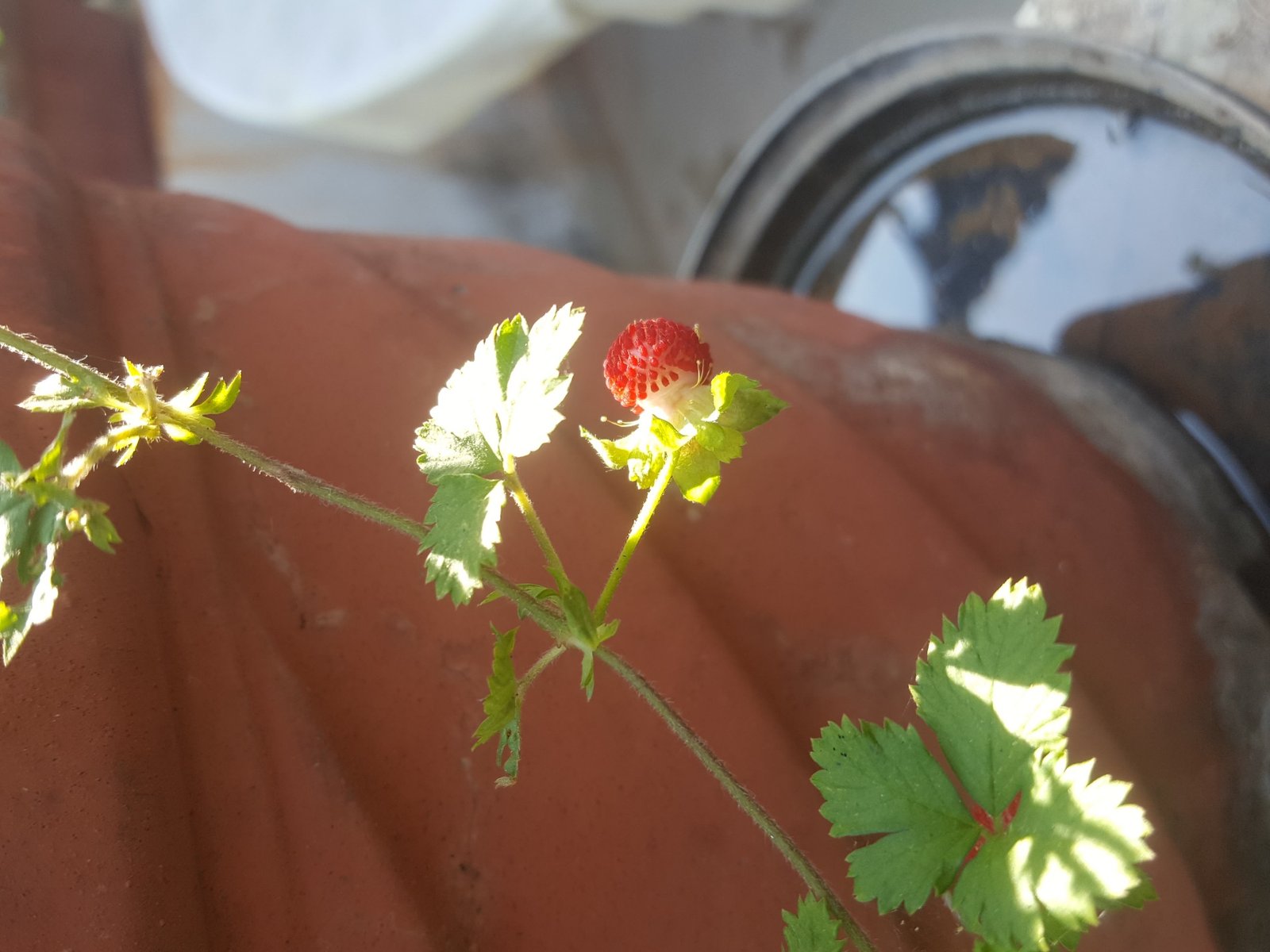
Wild Strawberry

Flowers
Orchids, Balsam, Dahlia, various ornamentals


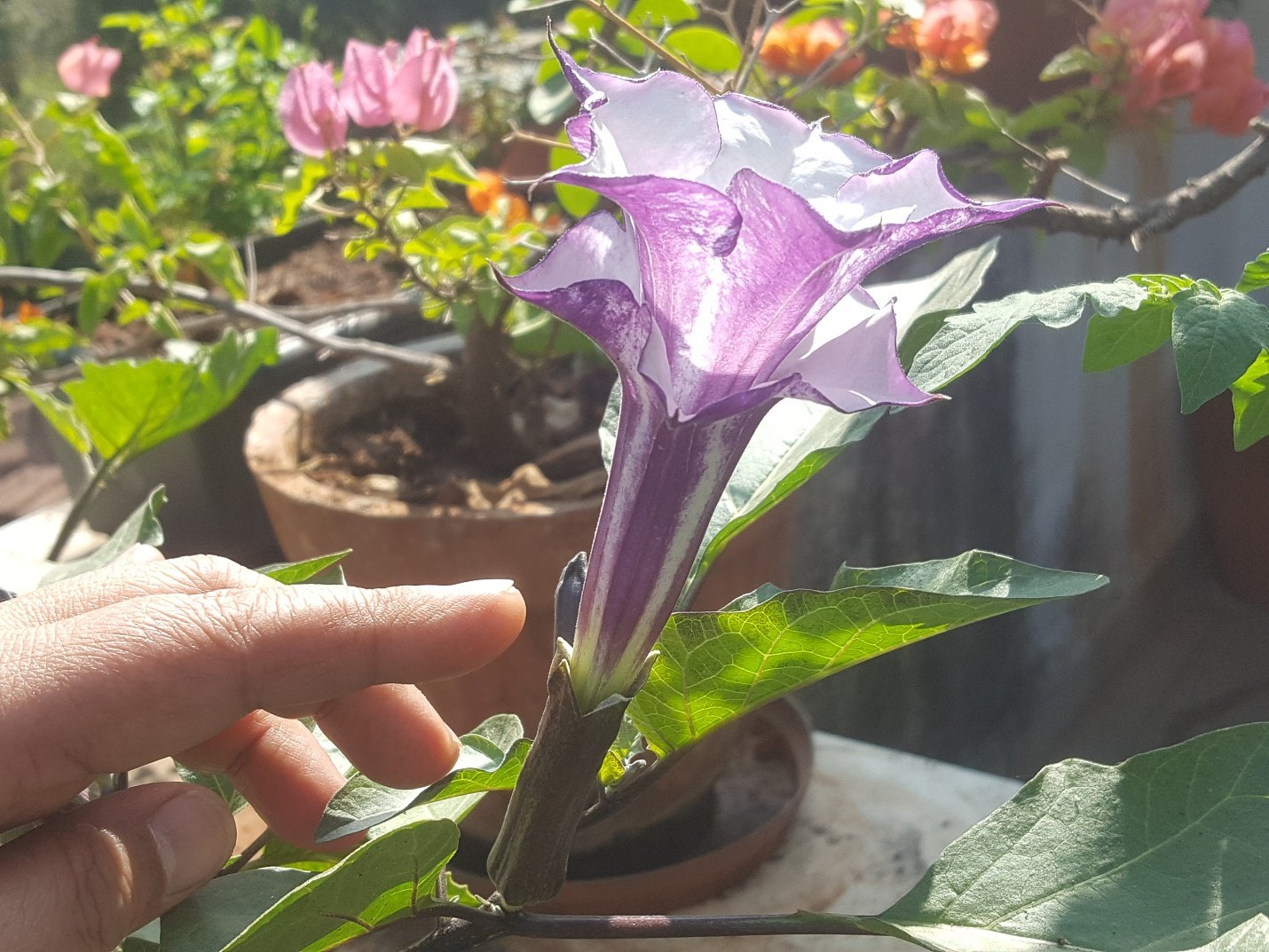
Concluding Words
Rina has extensive experience of field work, training the farmers. She has done research in tissue culture with National Chemical Laboratory (NCL). Her PHD thesis was about French beans. Highly dedicated teacher, researcher, a busy mother, there is a lot to learn from Rina.
Rina has set an example, that every city dweller should follow. All the kitchen waste from her home is utilized in her garden. Rina makes sure that not only from her bungalow, but not a single dry leaf from her society is burnt.
Hats off to her dedication, her concern for environment and her sense of responsibility towards community and future generation.

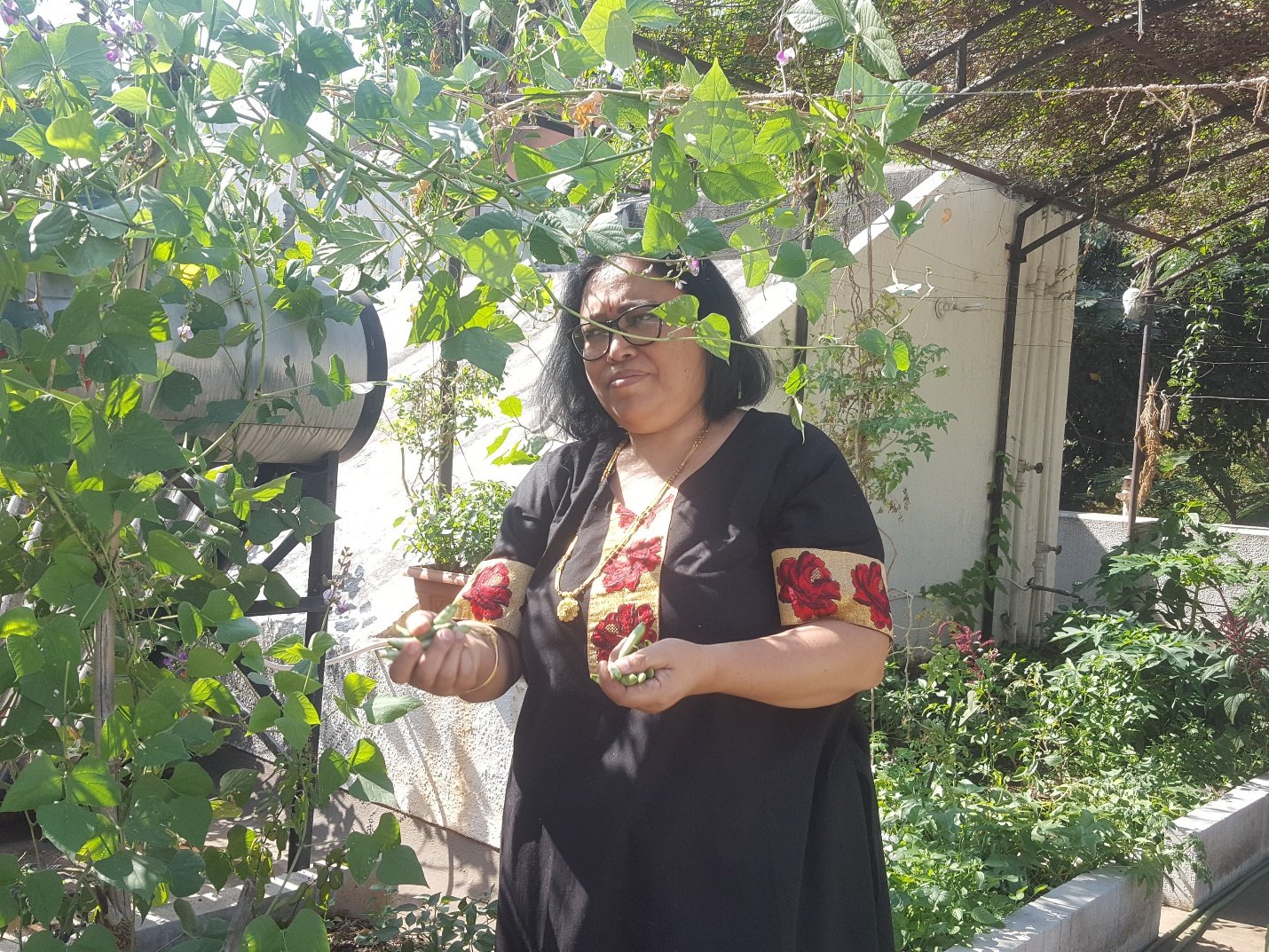
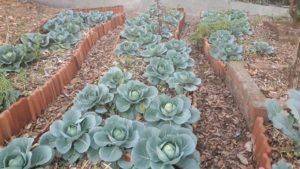


I want such gardan .
True power of knowledge is in sharing and not in hoarding. Rinaji shares her experience, knowledge with all happiness. She is truly awesome. She also has a witty side which is displayed as she gives her valuable suggestions on the group. Thank you for all your guidance on the group Rinaji🙏🏻
Regards,
Medha Tengshe